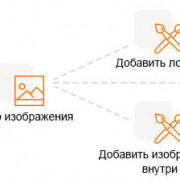Marketing strategy
Содержание:
- THE NATURE OF MARKETING STRATEGY
- Контроль эффективности маркетинга
- Стратегия развития рынка
- Use Facebook ads with re-targeting.
- Measurement of progress[edit]
- The marketing planning process[edit]
- Стратегия диверсификации
- Strategic models[edit]
- Key part of the general corporate strategy[edit]
- Create an affiliate program.
- Budgets as managerial tools[edit]
- Marketing Strategyedit
- Start blogging now.
- Create video tutorials.
- Understand search engine optimization.
- What are the best marketing strategies to use?
- Конкурентная стратегия лидерства в продукте
- План действий
THE NATURE OF MARKETING STRATEGY
DECISION MAKING.
Marketing strategy is the result of decision making by corporate
executives, marketing managers, and other decision makers. In general, the
formal organizational titles or jobs of decision makers, or the nature or
purpose of the organization, are irrelevant to the formulation of
marketing strategy. When the decisions concern products or markets, the
results—i.e., the decisions—are all considered marketing
strategy.
NARROW PERSPECTIVE.
In a narrow sense, marketing strategy is a specified set of ways developed
by marketers to achieve desired market ends. E. Jerome McCarthy and
William D. Perreault Jr., authors of
Basic Marketing,
stated that a marketing strategy defines a target market as well as an
appropriate marketing mix and an overview of what a company will exploit a
given market. In a marketing planning context, where marketing strategy
tends to be developed, McCarthy and Perreault indicated that marketing
strategy planning means finding attractive opportunities and planning ways
to capitalize on such opportunities.
BROAD PERSPECTIVE.
In a broad sense, marketing strategy is composed of objectives,
strategies, and tactics. Objectives are ends sought. Strategies are means
to attain ends, and tactics are specific actions—i.e.,
implementation acts. A marketing objective of increasing market share is
linked to the marketing strategy of altering the product line in order to
reach new market segments and to the marketing tactic of introducing a new
brand name and various promotions for a targeted portion of the market.
STRATEGY LEVELS.
Marketing strategy is developed at different levels of an organization
(the hierarchical dimension), across core marketing functions (the
horizontal dimension), and for marketing execution and control functions
(the implementation dimension). Strategy is usually developed in a
hierarchical fashion from top to bottom; for example, there could be
several layers of objectives where each objective is a function of a
superstructure of superior objectives, and a determinant of subordinate
objectives (except for the highest and lowest levels of objectives).
Higher-level decisions—the superstructure—act as
constraints on the one hand, and guides or aids for decision making on the
other. The organization levels could include the overall corporate level,
strategic business units, product markets, target markets, and marketing
units, depending on the complexity of the organization.
MARKETING MIX STRATEGY.
Strategy is also developed across the core functional areas of marketing:
product, price, place/distribution, and promotion strategies. Any
functional level of marketing, in turn, can have additional levels of
marketing strategy decisions where refinement of the strategy might take
place. For example, in the advertising component of the promotion
function, the organization might develop marketing strategy consisting of
advertising objectives, advertising strategies, advertising themes,
advertising copy, and media schedules. In addition, because of the growing
customer emphasis of marketing, marketers have added new customer-oriented
components to the marketing mix: customer sensitivity, customer
convenience, and service.
Контроль эффективности маркетинга
Итак, расходы на маркетинг составляют заметную долю в бюджете современных фирм. Поэтому контроль маркетинга, т.е. постоянное сопоставление расходов на его осуществление с результатами деятельности фирмы, должен проводиться постоянно, а не спонтанно. Естественно, что форма контроля зависит от уровня управления.
На стратегическом уровне — это ситуационный анализ, раскрывающий правильность выбора фирмой целей, меру полноты реализации фирмой своих потенциальных возможностей по отношению к рынкам сбыта, каналам товародвижения и товарам.
На тактическом уровне — ежегодное рассмотрение соответствия результатов поставленным задачам, контроль объемов продаж, доли рынка, контролируемой фирмой, отношения покупателей.
На оперативном, уровне рассматриваются прибыльность каждого из товаров фирмы, содержание и эффективность работы на рынках и их сегментах, размеры заказов и т.п.
Показателями эффективности расходования средств на маркетинг могут быть:
- объем продаж на единицу (или один час) переговоров;
- отношение расходов на маркетинговую деятельность к объему продаж;
- количество и объем продаж непосредственно по рекламным акциям;
- изменение популярности товаров фирмы в результате рекламной деятельности;
- прибыль, приходящаяся на одного работника отдела маркетинга.
В задачу маркетингового контроля входит также тщательный анализ рекламаций и возврата проданного товара, выявление причин и разработка мероприятий, исключающих повторение подобных случаев.
Важнейшей задачей повышения эффективности маркетинга является обучение специалистов фирмы методам оценки финансовых последствий принимаемых ими решений.
Стратегия развития рынка
Стратегия развития рынка является стратегией экстенсивного роста и предлагает компании осваивать новые рынки для существующих товаров или услуг, и за счет привлечения новой аудитории к товару увеличить свой доход и прибыль в долгосрочном периоде. Является стратегией роста с самым большим потенциалом.
Новые рынки – новые географические рынки или новые целевые сегменты потребителей. В таких условиях компания должна сосредоточиться на интенсивном развитии своего товара среди новой аудитории. При удачном применении стратегии, данный сегмент матрицы перейдет в сегмент «существующий рынок и существующий товар» и компания сможет применять уже стратегию дальнейшего проникновения на рынок.
Условия для эффективного использования стратегии
Ансофф выделял следующие условия для успешной реализации стратегии:
| Условие реализации стратегии | Описание |
| Условие 1 | Компания очень успешна в существующей деятельности и может распространить свой успешный опыт на новые рынки: у компании существует уникальный товар, уникальная технология, уникальная форма построения и ведения бизнеса и т.п. |
| Условие 2 | Новые рынки не насыщены, имеют низкие входные барьеры; на новых рынках существует неудовлетворенный спрос в области, в которой успешная компания. |
| Условие 3 | Новые рынки имеют высокие темпы роста. |
| Условие 4 | Компания обладает дополнительным капиталом для развития и закрепления компании на новых рынках. |
Тактические решения стратегии развития рынка
При работе с целевой аудиторией компания должна стремится увеличивать осведомленность товара и количество пробных покупок, формировать положительное отношение к бренду. А, устанавливая цены, использовать стратегию «снятие сливок» в случае наличия конкурентных преимуществ, готовности потребителя платить высокую цену за товара. В случае отсутствия уникальных атрибутов товара компания должна использовать стратегию средней цены.
Усилия дистрибуционной политики в стратегии развития рынка направлены на построение дистрибуции в ключевом канале продаж, а ассортиментная стратегия заключается в адаптации товара под потребности рынка и выпуск продуктов, стимулирующих пробную покупку. Например, компания может предлагать новые условия, дополнительный сервис, использовать более экономичную или дорогую упаковку.
Продвижение при выборе стратегии развития рынка должно быть сосредоточено на росте осведомленности о товаре на новом рынке (среди новой целевой группы). Рекомендуется использоваться высоко охватные медиа с низкой стоимостью размещения. Если товар компании обладает выраженным конкурентным преимуществом, то одновременно с построением знания доносится одно значимое конкурентное преимущество товара. Рекламная компания должна носить информационно-образовательный характер. Промо-акции должны быть направлены на стимулирование пробной покупки. Выгодно проводить акции для каналов распределения, облегчающие построение дистрибуции и уровня заметности на новом рынке.
Use Facebook ads with re-targeting.
One of the most powerful methods you can use to market just about anything these days are Facebook ads. With Facebook, you can reach a very specific audience and you can do it very easily. You can target by interest, age, relationships status, geographic location, and so much much more.
But the trick here to getting great results isn’t just about click-traffic. You have to focus on conversions and re-targeting through pixels. If you don’t know how to install the Facebook Pixel on your site, then you absolutely must learn how to do this right now. Even if you’re not running Facebook ads, you can build your audience with a pixel.
Pixels track everyone who comes to your site, and you can build custom audiences around them. For example, if you post content about how to learn to drive a semi-truck, and you track visitors with pixels, you can then market truck driving certification to people who have already shown an interest in that already because they visited that specific page. And your conversions will skyrocket.
Related: Here’s How to Master Facebook Advertising and Why You Must
Measurement of progress[edit]
The final stage of any marketing planning process is to establish targets (or standards) so that progress can be monitored. Accordingly, it is important to put both quantities and timescales into the marketing objectives (for example, to capture 20 per cent by value of the market within two years) and into the corresponding strategies.
Changes in the environment mean that the forecasts often have to be changed. Along with these, the related plans may well also need to be changed. Continuous monitoring of performance, against
predetermined targets, represents a most important aspect of this. However, perhaps even more important is the enforced discipline of a regular formal review. Again, as with forecasts, in many cases the best (most realistic) planning cycle will revolve around a quarterly review. Best of all, at least in terms
of the quantifiable aspects of the plans, if not the wealth of backing detail, is probably a quarterly rolling review — planning one full year ahead each new quarter. Of course, this does absorb more planning resource; but it also ensures that the plans embody the latest information, and — with attention focused on them so regularly — forces both the plans and their implementation to be realistic.
Plans only have validity if they are actually used to control the progress of a company: their success lies in their implementation, not in the writing’.
The marketing planning process[edit]

The marketing process model based on the publications of Philip Kotler. It consists of 5 steps, beginning with the market & environment research. After fixing the targets and setting the strategies, they will be realised by the marketing mix in step 4. The last step in the process is the marketing controlling.
In most organizations, «strategic planning» is an annual process, typically covering just the year ahead. Occasionally, a few organizations may look at a practical plan which stretches three or more years ahead.
To be most effective, the plan has to be formalized, usually in written form, as a formal «marketing plan.» The essence of the process is that it moves from the general to the specific; from the overall objectives of the organization down to the individual Objective (goal)|action plan for a part of one marketing program. It is also an interactive process, so that the draft output of each stage is checked to see what impact it has on the earlier stages — and is amended.
Стратегия диверсификации
Стратегия диверсифицированного роста предполагает разработку новых товаров для новых рынков. Данная стратегия является самой рискованной из предложенных стратегия роста. Причины выбора стратегии диверсификации — распределить риски компании между разными сферами бизнеса (в случае, если один вид бизнеса будет не успешным, второй обеспечит компании рост) или уйти с существующих рынков, которые имеют отрицательные темпы роста и низкую норму прибыли.
Компания при выборе стратегии диверсификации должна иметь возможность инвестирования и выделения дополнительных ресурсов для развития нового бизнеса.
Подготовлено с использованием источников:
1.Ansoff, H.I.; «Strategies for Diversification»; Harvard Business Review; September-October 1957.
2.Buskirk, Bruce D. and Popper, Edward D.; «Growth Strategies for High Tech Firms»; The Graziadio Business Report; Spring 1998.
Готовые решения
У нас есть готовый шаблон, с помощью которого вы с легкостью сможете применить теоретические знания данной статьи на практике. Скачать шаблон для анализа и оценки источников роста по матрице Игоря Ансоффа можно в разделе «Полезные шаблоны по маркетингу».
Cледующая статья:
Please enable JavaScript to view the comments powered by Disqus.
comments powered by Disqus
Strategic models[edit]
Marketing participants often employ strategic models and tools to analyze marketing decisions. When beginning a strategic analysis, the 3C’s|3Cs can be employed to get a broad understanding of the strategic environment. An Ansoff Matrix is also often used to convey an organization’s strategic positioning of their marketing mix. The 4P’s|4Ps can then be utilized to form a marketing plan to pursue a defined strategy.
Marketing in Practice
The Consumer-Centric Business
There are a many companies especially those in the Consumer Package Goods (CPG) market that adopt the theory of running their business centered around Consumer, Shopper & Retailer needs. Their Marketing departments spend quality time looking for «Growth Opportunities» in their categories by identifying relevant insights (both mindsets and behaviors) on their target Consumers, Shoppers and retail partners. These Growth Opportunities emerge from changes in market trends, segment dynamics changing and also internal brand or operational business challenges.The Marketing team can then prioritize these Growth Opportunities and begin to develop strategies to exploit the opportunities that could include new or adapted products, services as well as changes to the 7Ps.
Real-life marketing primarily revolves around the application of a great deal of common-sense; dealing with a limited number of factors, in an environment of imperfect information and limited resources complicated by uncertainty and tight timescales. Use of classical marketing techniques, in these circumstances, is inevitably partial and uneven.
Thus, for example, many new products will emerge from irrational processes and the rational development process may be used (if at all) to screen out the worst non-runners. The design of the advertising, and the packaging, will be the output of the creative minds employed; which management will then screen, often by ‘gut-reaction’, to ensure that it is reasonable.
For most of their time, marketing managers use intuition and experience to analyze and handle the complex, and unique, situations being faced; without easy reference to theory. This will often be ‘flying by the seat of the pants’, or ‘gut-reaction’; where the overall strategy, coupled with the knowledge of the customer which has been absorbed almost by a process of osmosis, will determine the quality of the marketing employed. This, almost instinctive management, is what is sometimes called ‘coarse marketing’; to distinguish it from the refined, aesthetically pleasing, form favored by the theorists.
Key part of the general corporate strategy[edit]
A marketing strategy is most effective when it is an integral component of corporate strategy, defining how the organization will successfully engage customers, prospects, and competitors in the market arena. Strategic management|corporate strategies, corporate missions, and corporate goals. As the customer constitutes the source of a company’s revenue, marketing strategy is closely linked with sales. A key component of marketing strategy is often to keep marketing in line with a company’s overarching mission statement.
Basic theory: 1) Target Audience 2) Proposition/Key Element 3) Implementation
Create an affiliate program.
Most people don’t understand the power of affiliate marketing. Affiliates can provide massive fuel for growth. But approaching the right partners isn’t always that easy. You have to have good conversion if you want the bigger affiliate to take you seriously.
I’ve found that navigating the affiliate minefield can be tricky. It takes persistence and it takes true grit to make it through. Most of us get discouraged after a few setbacks, but you can’t allow emotions to get in the way when it comes to affiliate. Build an affiliate program and start reaching out to potential affiliate who can assist you.
Related: The Affiliate Marketing Model: A Blueprint for Success in the Gig Economy
10. Use Email Marketing Sequences
When you do send broadcasts, split test. Split test everything, in fact, You never really do know what’s going to be the most effective until you pull the trigger and really test it out. This will help you understand what your audience responds to better, making you a better communicator, and better able to sell to your customers.
Budgets as managerial tools[edit]
The classic quantification of a marketing plan appears in the form of budgets. Because these are so rigorously quantified, they are particularly important. They should, thus, represent an unequivocal projection of actions and expected results. What is more, they should be capable of being monitored accurately; and, indeed, performance against budget is the main (regular) management review process.
The purpose of a marketing budget is, thus, to pull together all the revenues and costs involved in marketing into one comprehensive document. It is a managerial tool that balances what is needed to be spent against what can be afforded, and helps make choices about priorities. It is then used in
monitoring performance in practice.
The marketing budget is usually the most powerful tool by which you think through the relationship between desired results and available means. Its starting point should be the marketing strategies and plans, which have already been formulated in the marketing plan itself; although, in practice, the two will run in parallel and will interact. At the very least, the rigorous, highly quantified, budgets may cause a rethink of some of the more optimistic elements of the plans.
Marketing Strategyedit
A marketing strategy is a process that can allow an organization to concentrate its limited resources on the greatest opportunities to increase sales and achieve a sustainable competitive advantage. A marketing strategy should be centered around the key concept that customer satisfaction is the main goal.
Start blogging now.
Sure, you could start a blog. If you don’t have a blog for your business, then you need to start one immediately. But you don’t just have to blog on your own blog. Most people find blogging mundane because they lack the visibility. The truth is that your blog is going to be like a barren desert unless you know what you’re doing.
When you do blog, ensure that you blog effectively. Don’t post thin content. Think about adding value. Worried about revealing all your business secrets? Don’t be. Give away the farm. Give people so much value that you instantly become an authority in their eyes. This is one of the most powerful strategies you can use to market any business.
Related: 5 Ways to Build an Audience for Your Blog and 10 Ways to Make Money Once You Have
Create video tutorials.
One of the most effective ways to get the word out on your business is to create video tutorials. Teach people something useful. Walk them through it. Hold their hands. Step-by-step tutorials are all the rage. The better you are at this, and the more value you provide, the quicker you can boost your visibility, and ultimately, your sales.
Today, YouTube is the second largest search engine in the world behind Google. Whenever someone wants to learn something visually, they head there. You’ve likely done it yourself countless times. So just ask yourself what you could teach in your business that would help consumers solve some pain point? What got you into business in the first place?
The hardest part? Hearing your own voice playing back and even seeing yourself. Now, you don’t have to appear visually on camera, but you’ll likely need to be heard. You get used to it over time. But you can’t ignore the visibility and reach of YouTube so get out there and start making authentic and useful videos today, right now.
Related: 6 Ways to Use Video to Sell New-Product Concepts
Understand search engine optimization.
There are companies out there who teach you how to use shady PBNs and other link schemes to «trick» Google. It might get short-term results, but in the long term, you’ll land in hot water. You can’t take shortcuts with SEO. Just like in business, you have to put in the work and the time if you want to see the results.
Some tips for doing this the right way? Don’t spam keywords. Hands down. This is one of the biggest mistakes most people make. Create your content for humans while also paying homage to search engines. But more importantly, ensure that whatever it is that you’re conveying is insightful, engaging, unique and adds a tremendous amount of value.
Related: SEO Tutorial: 12 Immutable Laws For Dominating Google’s Search
What are the best marketing strategies to use?
Most businesses are faced with a conundrum. It’s a Catch-22. There’s a clear need for increased visibility to drastically improve sales. But in order to get more visibility, businesses have to spend more money. When that well runs dry, what are you supposed to do?
There is no obvious and clear answer to that question that covers all situations. But there are things that can be done today, right now, even on a shoestring budget, to reach more customers without breaking the bank. However, it all boils down to time. If you lack the money, you sure better have the time to put in the sweat equity.
Either way you slice it, as long as the fundamentals of a sound business are there and you’re working tirelessly to build an authentic relationship with the consumer by sincerely trying to add value, then there are 10 go-to strategies you can use to market any business online.
Конкурентная стратегия лидерства в продукте
Конкурентная стратегия дифференциации по Портеру или стратегия дифференцированного маркетинга означает создание уникального товара или услуги, совершенствование обычного стандартизированного товара с целью продажи его по более высокой цене и получении более высокой нормы прибыли.
Стратегия дифференцированного маркетинга является эффективным методом достижения конкурентного преимущества на рынке, является самой распространенной стратегией конкуренции и позволяет обеспечить долгосрочный прибыльный рост.
Используя стратегию дифференциации, компания наделяет свой товар уникальными свойствами, которые важны для целевой аудитории, а значит позволяют назначать более высокую цену за продукт. Отличие и уникальность в свойствах защищает товар от прямого конкурентного соперничества и от давления со стороны товаров-заменителей, а также создает лояльность потребителей к бренду и снижает чувствительность к цене.
Стратегия лидерства в продукте требует наличия уникальных свойств продукта, высокой квалификации трудовых ресурсов (маркетинга, исследователей, разработчиков), возможности создания репутации высокого качества товара, возможности защиты созданного конкурентного преимущества товара (патенты). Стратегия дифференциации может требовать высоких инвестиций, которые необходимы для разработки уникальных свойств, а также для донесения данных свойств товара до целевого рынка (прямой рекламы продукта).
Преимущество стратегии дифференцированного маркетинга в том, что она позволяет продавать товар дороже цены обычного товара, позволяет уйти от прямой конкуренции и снизить негативное влияние на продажи компании лидеров рынка. Стратегия может сформировать высокую лояльность и приверженность к бренду, если компания найдет значимые преимущества для товара и правильно построит ассортимент.
На практике выделяют следующие риски или недостатки использования стратегии дифференцированного маркетинга:
- возможна значимая разница в ценах, которая отпугнет целевых потребителей даже при наличий уникальных свойств продукта;
- потеря уникальности товара по причине быстрого копирования уникальных свойства более дешевыми субститутами;
Стратегия дифференциации используется на насыщенном рынке компаниями, имеющими возможности к высокому уровню инвестиций в рекламу для построения осведомленности об уникальных свойствах продукта. Используя стратегию дифференциации не следует рассчитывать на низкую себестоимость товара: она будет скорее всего выше среднего показателя по рынку, но зато следует рассчитывать на возможность установления более высокой цены на продукт.
Рассмотрим использование дифференцированного маркетинга на примере рынка шампуней: Head&Shoulders заявляет о том, что он специализируется на лечении перхоти; Fructis направлен на укрепление волос; Shamtu на создание объема; Dove на питание и восстановление; Timotey на пользу натуральных ингридиентов и т.п. Каждая из этих компаний стремиться выделить свой продукт, придав ему особые свойства и образ, за которые потребитель готов заплатить выше, чем за обычный шампунь для мытья волос.
План действий
Если ваша компания до сих пор не определилась с вектором конкурентной стратегии, то пора переосмыслить ключевые цели и задачи бизнеса, оценить ресурсы и возможности компании и пройти 3 последовательных шага:
| Последовательность | Описание этапа |
| Шаг первый | Принять фундаментальное решение и выбрать одно из направлений стратегии, основываясь на возможностях, сильных и слабых сторонах продукта |
| Шаг второй | Разработать устойчивое конкурентное преимущество или УТП продукта, которое будет подчеркивать выбранное направление конкуренции. |
| Шаг третий | Определить ключевых конкурентов, у которых планируется отбирать долю рынка, и конкурентов, которые представляют угрозу компании; и сформировать план тактических действий для повышения конкурентоспособности бизнеса. |











